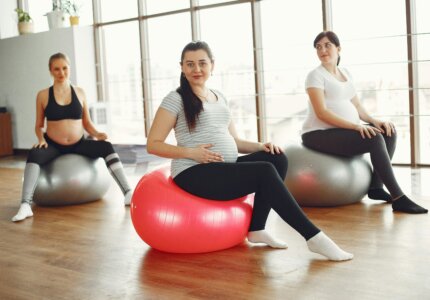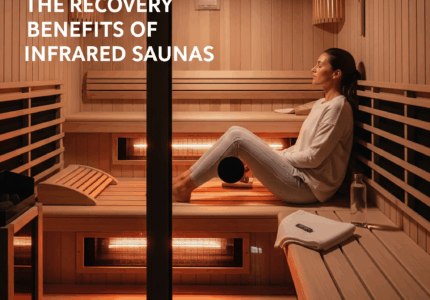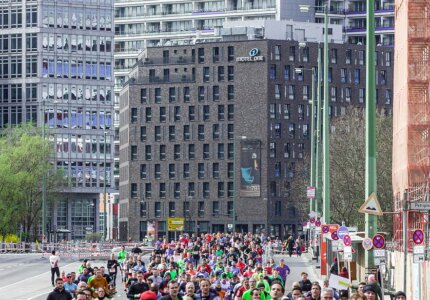🧊 Ice Baths Aren’t One-Size-Fits-All: What Melbourne Athletes Should Know
Cold Water Immersion (CWI) Explained by Shannon Clinic
Ice baths or (cold water immersion) are recovery tools which have long been used in professional sports, particularly in sports such as tennis where recovery is vital with short turnaround times in between matches and tournaments. Ice bath use is now on trend in the general population as individuals look for the same recovery benefits of athletes. In this blog, Melbourne sports chiropractor Dr. Nicholas Shannon explores the theory behind ice baths, whether they provide any real benefit and identifies the optimal temperature and duration one needs to spend in an ice bath, as not all ice baths are the same
❄️ What Is Cold Water Immersion?

Cold water immersion (CWI) has been around for decades and as the name implies, it is the process of immersing the body in cold water, usually 15 degrees celsius or less for 5 to 20 minutes following intense exercise, in an attempt to attenuate the stress and damage the body undergoes during exercise, to aid in a faster recovery, to mitigate fatigue and optimize performance.
Intense exercise results in physiological changes and damage to the body including muscle damage, oedema, hyperthermia, dehydration, glycogen depletion and tissue inflammation. The proposed effects of CWI have been attributed to hydrostatic pressure and/or reductions in body tissue temperatures which impacts tissue blood flow (vasoconstriction), post exercise fluid retention and metabolic activity. This may accelerate the recovery process by reducing muscle tissue damage, swelling, inflammation, muscle spasm pain and thermal stress.
The Effects of CWI on Performance
At a high level view, it would appear that sitting in an ice bath after exercise for a few minutes will lead to faster recovery, reduce inflammation, muscle soreness and fatigue, as well as improved performance. However, the literature paints a more complex picture which can be situation and dose-response dependent. Furthermore, there is wide variability in testing protocols used to examine CWI (temperature of the water, duration of time spent in the water, follow up time points analysed, exercise interventions etc) making it more challenging to pool data in the quest for more accurate findings.
Inflammation and Cold Water Immersion
In terms of reduction of inflammation within skeletal muscle the evidence is mixed. One study suggests CWI is no more effective than active recovery (slow, warm-down) for minimizing inflammation and the stress response following resistance exercise. Moreover, a 2017 study examining CWI and whole body exposure following a marathon found similar results which showed CWI was no more effective than active recovery. While a 2023, meta-analysis showed that CWI reduces inflammatory markers including creatine kinase (CK), interleukin 6 (IL-6) and lactate at 0, 24 and 48 hours post exercise, which is consistent with other studies; although CWI did not produce any effect on CK or IL-6.
Resistance and Aerobic Performance and Cold Water Immersion

A 2020 systematic review and meta-analysis found regular use of CWI following resistance training had a negative effect on maximal strength and strength endurance, this included 1RM, maximal isometric strength, strength endurance, and ballistic efforts which were all reduced following CWI. This is reported to be due to the effects of cooling on myogenesis (new muscle formation) which negatively impacts skeletal muscle strength and growth development, therefore blunting the tissue adaptation response to resistance training. Additionally, the paper found CWI did not impact performance gains associated with aerobic training.
A 2022 systematic review and meta-analysis found CWI was effective in promoting recovery in muscle power after eccentric exercise at 24, 48 and 72 hours; CWI was effective in promoting recovery in muscle power 24 hours after high intensity exercise. However, CWI was not effective in recovering muscle strength at 24 hours following either eccentric exercise or high intensity exercise, lending some additional support to the notion that cooling blunts myogenesis.
Interestingly though, a 2023 systematic review and meta-analysis looking at the effects of CWI on the recovery profile of physical performance conversely found CWI impairs muscle power production 1 to 6 hours post CWI. Furthermore, their analysis showed CWI was effective in the recovery of muscle strength 24-48 hours post following endurance exercise, again in contrast to the two prior review papers. Their findings on CWI recovery following endurance performance was consistent with the 2020 and 2022 reviews within 1 hour of exercise showing reduced perceived fatigue and soreness, thermal and cardiovascular strain.
Flexibility, DOMS, CK Levels and Cold Water Immersion
Additionally findings from the 2022 review paper found,
- CWI had no effect on the recovery from flexibility performance
- CWI was effective at recovery from delayed muscle onset soreness (DOMS) at 48, 72 and 96 hours following eccentric exercise and was moderately effective in reducing DOMS following high intensity exercise at 24 and 48 hours
- CWI was not effective at 24 hours in reducing perceived recovery with a small effect at 72 and 96 hours post eccentric exercise. It was however effective at 24 hours post high intensity exercise
- In reducing CK levels following eccentric exercise CWI was only effective after 7 days, but was effective at 24 and 48 hours following high intensity exercise
- The CK findings were supported by the 2023 review paper, which found a reduction in CK levels following endurance exercise at 24 to 72 hours.
📉 When Ice Baths Help—and When They Don’t
Cold Water Immersion and Aerobic Exercise
It is important to note the variability in study designs brings with it the risk of biases which can influence the results. That being said, there are some areas where the literature appears to be slightly more consistent and other areas where the literature is mixed. In terms of recovery from endurance or high intensity exercise there is a more consistent picture that CWI is beneficial for recovery. Endurance or high intensity training is more representative of athletic training and often involves high volumes of running which results in the greatest rise in CK levels and therefore muscle damage in the lower limb, potentially one explaination for why CWI may be beneficial.
Cold Water Immersion and Resistance Exercise
The picture is less clear with respect to resistance training with mixed data on the recovery of both power and strength following eccentric (resistance) training and the overall effects of CWI on blood inflammation markers. With evidence to suggest CWI attenuates the physiological adaptation responses to resistance training (ie. muscle hypertrophy, strength, power) and no evidence indicating CWI is beneficial or augments the adaptative responses to strength training.
It makes recommending ice baths following resistance exercise with short turn around times between sessions less robust, particularly if the focus of the sessions are strength gains and hypertrophy. There may be resistance training subgroups who might benefit from CWI, such as chronically trained elite athletes or during periods of high training loads, where the focus is on short-term recovery rather than physiological adaptations.
🧪 What’s the Optimal Ice Bath Protocol?
Finally, the burning question on most readers’ minds no doubt will be, “what is the optimal immersion time and temperature?”. Two papers looked specifically at the optimal timing and temperature for CWI which indicated 11-15 degrees celsius water temperature, for 11-15 minutes of immersion provided the best results for both immediate and delayed effects. While those undertaking high intensity training should look for a shorter duration, at a lower temperature for optimal results.
Final Thoughts On Cold Water Immersion
In summary, based on the current state of the literature CWI following endurance exercise appears to be beneficial for recovery and could be considered as part of an overall recovery plan. However, with mixed data on the recovery benefits following resistance exercise, coupled with evidence suggesting CWI may have a physiological blunting effect on muscle adaptation following resistance training, CWI would best be considered on an individual basis and may not be beneficial in all cases following resistance training.
🔗 Related Resource
- The Power of Mental Imagery For Melbourne Athletes
- How Sleep Improves Athletic Performance – Why It Is A Sports Chiropractors Key Recommendation
- Why Infrared Saunas Are A Must for Athletes in Melbourne
- The Importance of Protein For Athletes Training in Melbourne
- What Is The Impact of Keto Diets on Athletic Performance – A Sports Chiropractors Analysis
Optimizing training and athletic performance involves a raft of different strategies including ice baths, mental imagery, sleep, nutrition. Additionally, we recommend regular treatment including remedial and sports massage to help keep your body fresh. If you would like to make a remedial massage or sports chiropractic appointment, you can book on the link below. Our sports chiropractic clinic is centrally located on the corner of Swanston Street and Collins Street, in the CBD of Melbourne.



